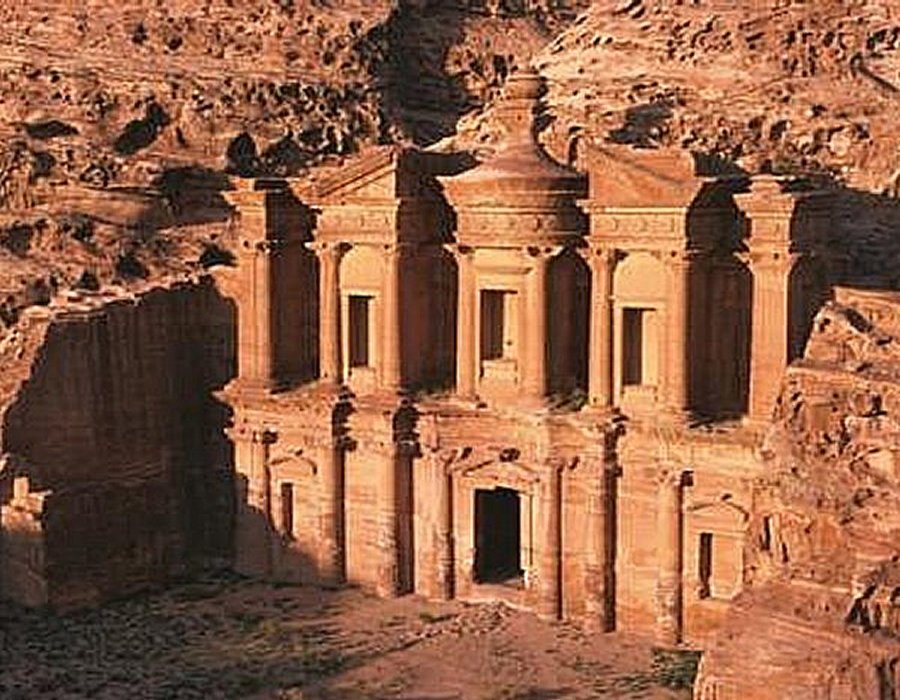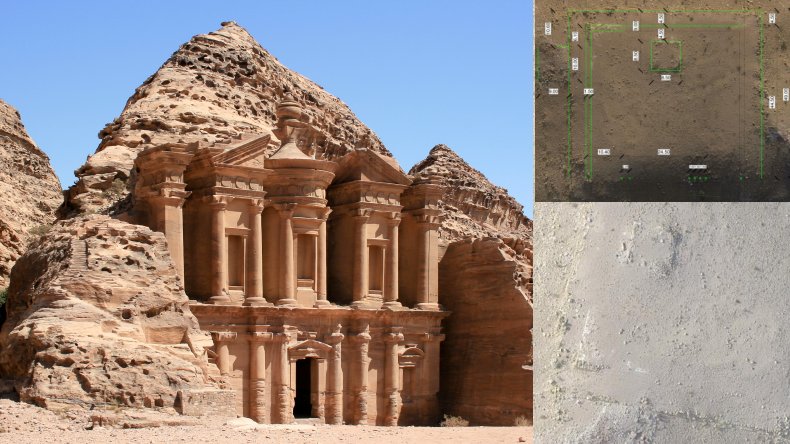MessageToEagle.com – A new huge previously unknown monument has been discovered in the ancient city of Petra, Jordan.
The enormous monument that is huge ceremonial platform near the ancient city’s center was spotted thanks high-resolution satellite imagery followed by aerial drone photography and ground surveys to locate and document the structure.
According to preliminary reports, the monument is as long as an Olympic-size swimming pool and twice as wide. Archaeologists Sarah Parcak, a National Geographic fellow, and Christopher Tuttle, executive director of the Council of American Overseas Research Centers say the monument appears to be a unique feature that has “no parallels at Petra or in its hinterlands at present.”
The ancient city of Petra was built by the lost Nabataean civilization.

The Nabataeans prospered in the first century BC and the first century AD in what is now Jordan and neighboring countries.
The Nabateans are mentioned about the beginning of the Christian era as a race distinguished for their astronomical and general knowledge. It is supposed that they were the ancestors of the ancient Babylonians and Chaldeans.
The Nabatean civilization combined Hellenistic architecture with traditional Nabataean rock-cut temple/tombs can be seen in the city’s Deir (“monastery”), the Urn Tomb, the Palace Tomb and the Corinthian Tomb.
The Nabateans were also remarkable ancient astronomers who watched the sky systematically and accurately and the proof of their astronomical observations can be find in Petra’s celestially aligned buildings.
See also:
Skilled Nabateans Celestially Aligned Petra’s Wonderful Architecture
Unclear Purpose Of Mysterious Rock-Cut City Of Petra – Was It A Fortress Or Sacred City?
Thousands Of Petroglyphs And Inscriptions In Wadi Rum, Jordan – 12,000 Years Of Human Occupation
Mada’in Saleh: Magnificent Timeless Rock-Cut Tombs And Monuments In The Desert
While the monument has not been excavated, the presence of surface pottery dating from the mid-second century B.C. suggests that construction of the structure began duringthe second century near the city center when the Nabataean civilization was flourishing, and it appears “highly likely that the platform and structures were initially constructed to serve ceremonial purposes.”
PHOTOGRAPH BY I. LABIANCA
That ceremonial focus probably allowed the site’s conversion to a Christian chapel during the Byzantine period. During later Islamic periods, ordinary uses were more likely.
“I’m sure that over the course of two centuries of research [in Petra], someone had to know [this site] was there, but it’s never been systematically studied or written up,” says Tuttle. “I’ve worked in Petra for 20 years, and I knew that something was there, but it’s certainly legitimate to call this a discovery.”
A smaller platform measuring about 46 × 44 meters was constructed within the larger platform, with one side of the smaller platform fronted by a row of columns.
“The row of columns crowned a monumental stairway that spanned the entire width of the smaller platform,” according to the study.
MessageToEagle.com







